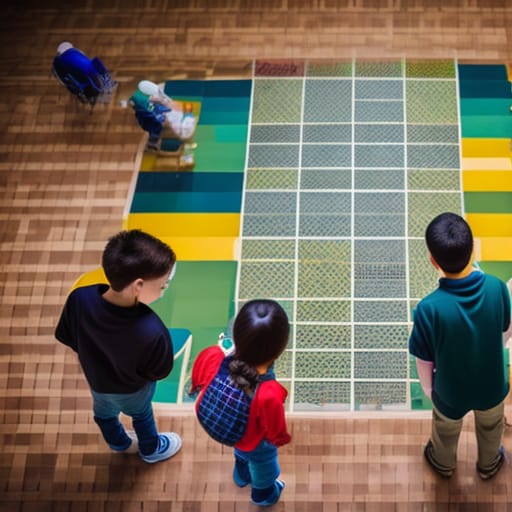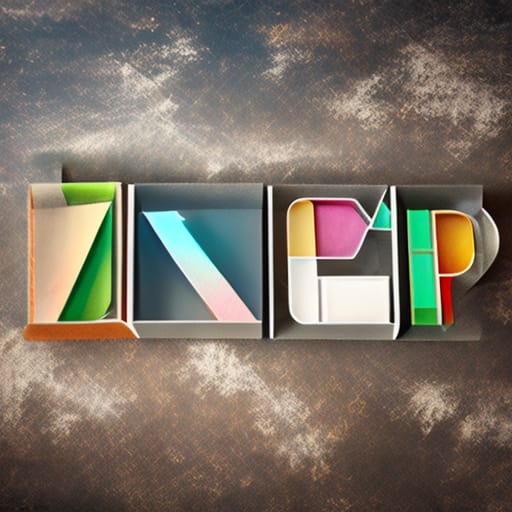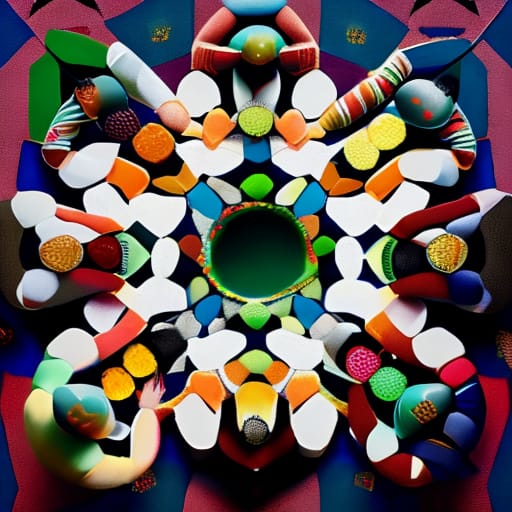Have you noticed those colorful little magnetic tiles or blocks that children can’t seem to put down? Magnetic building sets encourage open-ended construction play that fascinates kids and boosts their development. As a parent, teacher, or gift-giver, read this beginner’s guide on the benefits of magnetic building blocks and what to look for when buying them.
What Are Magnetic Building Blocks?
Magnet building toys include any set of magnetic pieces that can attach together to construct imaginative designs. Sets may include:
- Magnetic tiles – flat, geometric tiles in different shapes that have magnets along their edges to connect.
- Magnet construction sets – magnetic sticks, spheres, panels, or connectors that link together.
- Magnetic block sets – small cubed blocks embedded with magnets to build 3D structures.
[Image: Multi-shaped magnetic tiles spelling a child’s name]
Unlike regular building blocks or other construction toys, the pieces in magnetic sets stick together firmly so kids can build vertically and upside down without structures collapsing. The sets also come apart easily without needing force, avoiding frustration.
Magnetic building toys inspire open-ended, creative play without the constraints of models, kits, or pattern guides. Children are free to construct anything they can imagine.
Developmental Benefits of Magnetic Blocks
Playing with magnetic building sets offers many perks for a child’s growth and education across skills like:
Spatial Reasoning and STEM Skills
Putting magnetic pieces together lets kids visualize shapes, improve spatial relations abilities, and grapple with early engineering concepts. Building progressively more complex structures introduces problem-solving, pattern recognition, and an understanding of stability, balance, and gravity.
Fine Motor Control
The process of connecting and disconnecting magnetic tiles/blocks develops fine finger muscles and hand-eye coordination. Control improves as children learn to precision-place pieces.
Creativity and Imagination
With no instructions to follow, magnetic sets spur creative thinking as the only limit is a child’s imagination. Kids delight in building scenes, characters, and designs from stories they imagine, or copying structures they see in real life.
Collaboration and Communication
Magnetic blocks invite collaborative play as kids team up to co-create bigger builds. Negotiating design decisions introduces cooperative play skills. Describing their thought process also builds language and explanation abilities.
Beyond playing solo, magnetic building sets make ideal toys for classrooms and therapy settings to achieve specific developmental goals.
Types of Magnetic Building Toys and Brands
Popular magnetic building toys tend to fall in three categories:
Magnetic Tiles
- Geometric, puzzle-piece shaped tiles in different colors
- Brands like Picasso Tiles, Magna-Tiles, or Creativity Street Rainbow Magnetic Pebbles
[Image: Colorful magnetic tiles spelling a child’s name]
Magnetic Block Sets
- Small cubed blocks to stack up 3D creations
- Brands like Goliath Magna-Qubix, VGiotto, or MANLLLO Magnetic Blocks
[Image: Child stacking magnetic blocks]
Magnetic Construction Sets
- Magnetic sticks, connectors, panels to link together
- Brands like Magformers, Magna-Tiles, or Q-Ba-Maze
While tiles allow flat mosaics and stacks, magnetic blocks and construction sets open up more complex 3D building.

Choosing the Best Magnetic Building Toys
With many toy brands offering magnetic building sets, keep these key factors in mind while choosing age-appropriate sets:
1. Safety
- Choose BPA-free sets with childsafe paint.
- For under 3 years, pick large pieces that cannot release small magnets if broken.
- Over 3 years, covered encased magnets prevent hazards.
2. Quality and Durability
See that tiles or blocks connect firmly and easily release without needing force/prying. Tiles should lie flat. Opt for thick, high-quality plastic pieces that withstand regular use without cracking or paint wearing off.
3. Size of Pieces
Pick chunky pieces for little hands. Very small pieces suit older children capable of precise manipulation.
4. Number of Pieces
Start small with around 30-60 pieces for beginners. Expand to 100+ pieces for more skilled builders.
5. Shape/Color Variety
Vibrant colors, varied geometric shapes, and texture combinations increase play possibilities.
6. Storage
Look for mesh bags, zipper pouches, plastic bins, or bounded playmats for easy storage and cleanup.
7. Child’s Interests
Spark their passion with nature, space, transportation, animal, or other themed set.
While tiles offer more variety, blocks enable stabler 3D structures. Mix-and-match sets bring out kids’ unique interests!
Best Magnetic Building Toys on Amazon
We’ve curated top-rated magnetic building sets suited for preschoolers and upwards based on quality, versatility, value for money and kid-appeal:
| Product | Type | # Pieces | Price |
|---|---|---|---|
| Magformers Basic Set | Construction | 62 | $$$ |
| Magna-Tiles Clear Colors | Tiles | 32 | $$ |
| PicassoTiles 60 Piece | Tiles | 60 | $ |
| Creativity Street Rainbow Pebbles | Tiles | 100+ | $ |
| MANLLLO 3D Magnetic Blocks | Blocks | 66 | $$ |
Let’s explore some pros, cons and appropriate age recommendations:
1. Magformers
Age: 5 years and up
2. Magna-Tiles
Age: 3 years and up
3. PicassoTiles
Age: 3 years and up
Mix-and-match brands for more variety like combining Magna-Tiles and PicassoTiles sets!
Using Magnetic Toys in Classrooms
Beyond home use, magnetic building sets allow engaging hands-on learning in preschools and elementary classrooms. Teachers use magnetic toys to:
- Teach STEM concepts: Have students build shapes and structures and explain principles of symmetry, balance, geometry, fractions, and more based on their constructions.
- Make lesson aids: Spell sight words, number words, vocabulary terms, and math concepts with magnetic letters/tiles as visual aids.
- Group projects: Have children collaborate on large structures like buildings, cities, or mosaic artworks that encourage teamwork.
- As play center additions: Provide magnetic sets alongside blocks, arts supplies, and dramatic play materials for kids to enrich creative play.
The unlimited construction options make magnetic sets open-ended tools that tie into diverse learning goals. Students stay meaningfully engaged through self-directed building tied to curriculum standards or IEP objectives.

Getting the Most Out of Magnetic Toys
Here are some helpful tips as your child starts enjoying magnetic building sets to boost play value:
1. Start simple: Begin with just a small portion of the available pieces – say 20 tiles or blocks. Then add more as your child is developmentally ready for bigger challenges.
2. Try pattern cards: Use pattern cards or shape outlines with very young kids/special needs kids as a building guide before they progress to own creations.
3. Build their interests: Spark initial ideas based around your child’s passions – help them build a zoo, garage, or castle based on what excites them.
4. Add loose parts: Enhance magnetic play by adding loose parts like toy cars, natural items (pebbles, sticks), craft supplies (googly eyes, pompoms) for endless mix-and-match fun.
5. Rotate the toys: Store away toys for a few weeks and bring them out again for renewed interest and more complex building at progressive developmental stages.
Frequently Asked Questions
Q: How are magnetic building toys different from regular building blocks?
A: Sets like magnetic tiles, blocks, and construction sets use embedded magnets so pieces firmly interlock from all sides and can defy gravity. This allows for more inventive 2D and 3D building than regular blocks stacked through gravity and balance.
Q: At what age can my child start enjoying magnet building kits?
A: Simple magnetic block sets and large magnetic tiles can engage children as young as 12 months. Look for larger pieces for under 3 years. More complex magnet construction sets with small pieces suit ages 3 years and up.
Q: How do I know if a magnetic toy brand is safe for my child?
A: Reputable magnetic toy brands test for safety standards. But check sets are BPA-free with coated/encased magnets. Also pick age appropriate magnet building toys avoiding tiny pieces that could loosen if broken.
Q: Why invest in plastic magnetic building materials rather than simple wooden blocks?
A: The magnetic building elements foster different skills than basic blocks. Connecting shapes, patterns, letters flexibly builds spatial reasoning, planning abilities. Magnetic attachments build persistence when sculptures won’t balance like plain blocks.
Q: How do I make the most of magnetic building blocks to boost my child’s development?
Beyond just free play, encourage your child to describe their building process out loud to build narrative skills. Have them replicate patterns using magnetic tiles to hone sequencing abilities or spelling with magnetic letters. Introduce challenges like building increasingly tall/large structures to stretch their planning skills over time. Add loose props to encourage imaginative play scenes. Rotate toys out periodically for renewed engagement at progressive levels.
